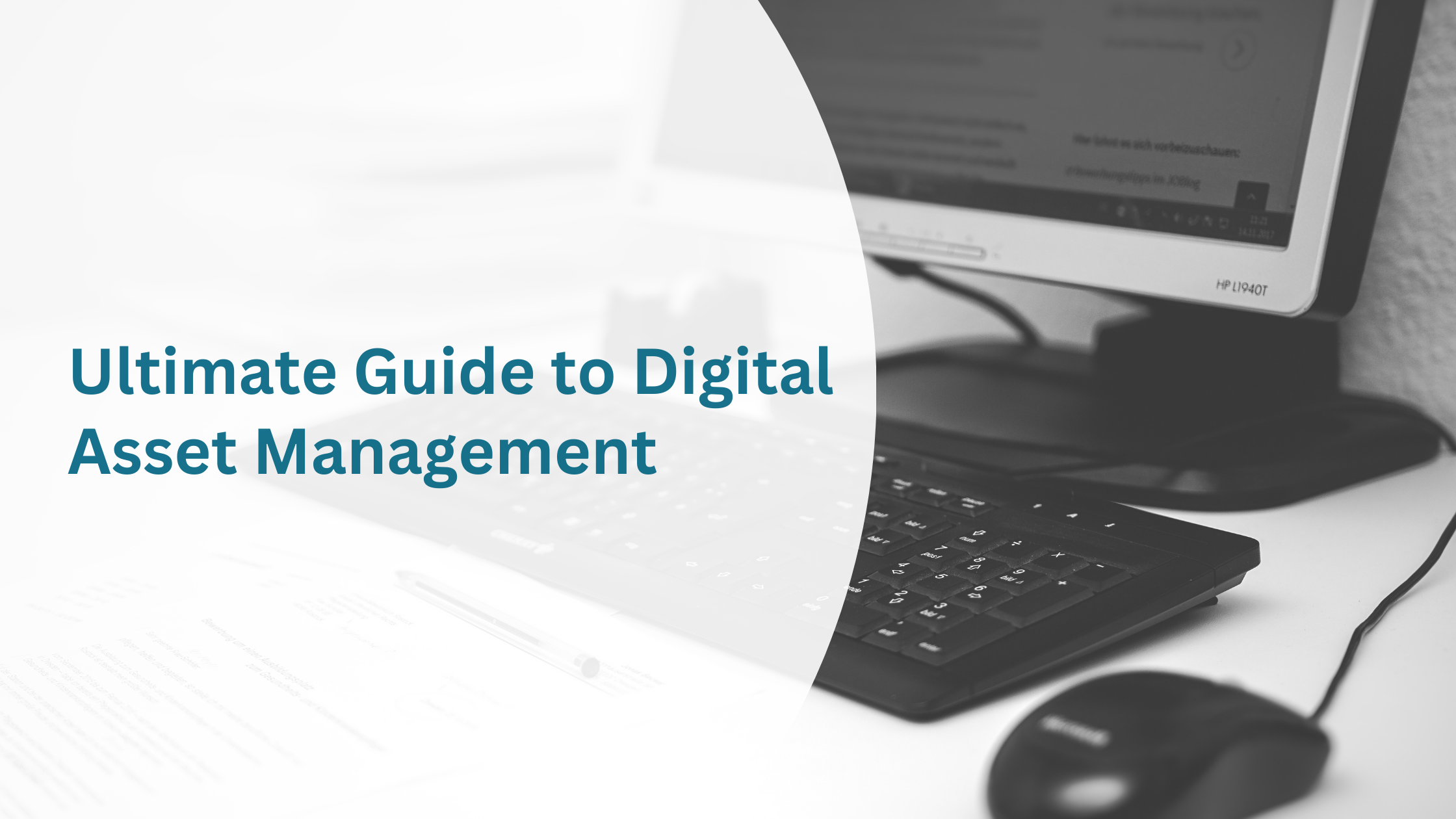OpenAsset Learning Hub
DAM vs CMS: How Are They Different?
Are you trying to understand how a DAM and a CMS work together? This guide covers the main differences, the key features and how you can integrate the two.
DAM and CMS Definitions
Digital asset management (DAM) is a business process and an information management technology that enables organizations with a way to organize and access their media assets, things like images, videos, and branding material.
A content management system (CMS), on the other hand, is an application used to create, edit and manage website content, like blog posts and landing pages. One helps you manage thousands of media files. The other helps you publish media files to your website. Though not reliant on one another, it’s possible to integrate your DAM and CMS so they work together.
Fortunately, the process is far easier than it sounds and much more efficient than you may think. Before we discuss the benefits of using a DAM and CMS together, it helps to understand the differences between a CMS and DAM, and how they provide value to different organizations.
CMS Definition: What is a CMS and How Does It Work
A content management system (CMS) is a software application that enables users to create and manage content on their website. Without a CMS, users would need to understand HTML code to upload content and make modifications to their website.
Needless to say, most internet users do not know how to write HTML code, add CSS style elements or utilize JavaScript. That’s where a CMS comes into play. Designed for the average user (non-developers), a CMS uses a graphic user interface (GUI) to manage the backend interactions of the website.
In other words, a CMS enables users to create, edit and publish content to their website with easy-to-use icons and buttons, rather than complicated HTML, CSS and JavaScript. The result is a user-friendly software application that makes it easy to create, manage and utilize your website.
DAM Definition: What is Digital Asset Management
Digital asset management (DAM) is a business process and an information management technology that enables organizations with a centralized system to organize and access their digital assets.

These media files come in several formats, and include any digital file that you have the right to use, including:
- documents,
- images,
- audio files,
- videos,
- logos,
- powerpoints slides.
- presentations,
- spreadsheets,
- graphics,
- PDFs,
- 3D models,
- animations,
- and more.
To simplify the search for these assets, DAM solutions utilize metadata to identify digital content with attributes and specific keywords. These identifiers create an index used to group and categorize assets by common tags (e.g. whitepaper, eBook, etc.), media type (e.g. video, image, etc.) and technology used (e.g. Photoshop, Canva, etc.) to improve searchability.
In other words, a DAM system works by creating agile workflows that enable your team to find, use and share your digital assets faster and easier than ever before.
CMS Key Features
Content management solutions share many of the same features as digital asset management solutions, but they differ in the way they utilize those features to create value for the user. The primary function of a CMS is to enable users with the ability to publish, remove, and edit content on their website. That includes the ability to:
- store, publish, and edit website content;
- write, edit, and publish blog posts;
- utilize web page builders or page templates; and
- create a searchable content library.
More advanced CMS solutions (WordPress, CMS Hub, Drupal, etc.), also enable users to track web page versions, perform basic search engine optimization (SEO) and manage user roles.
CMS Use Cases
The use cases for a content management system extend to everyone with a website. Even experienced website developers benefit from the speed, ease and efficiency that a CMS provides. In addition to public websites, a content management system can also be used to manage content on:
- Private Intranets,
- Mobile Apps,
- Internet of Things (IoT) Devices,
- HR Portals,
- Extranets, and
- Microsites.
Ultimately, a CMS is a great choice for any company looking to streamline the way they build visual, informative and user-friendly websites. But using a CMS without a DAM is like trying to build a house without tools – you can probably get the job done, but having the right tools makes the process a lot easier.
DAM Key Features
A digital asset management system (DAM) is an integral part of the content creation process, because it enables a company to organize, store and distribute their visual media from within one central library.

That library acts as a single-source-of-truth for every digital asset that a company uses in their day to day operations, including marketing, branding and proposal management. But that is only a fraction of the capability that a DAM provides. From within their DAM system, users can enjoy a variety of features, including:
- Standardized Templates and File Formats – Enable your team to prepare digital files for encoding even before they are created. This standardization improves the ease of document search and retrieval.
- Encoding, Indexing and Metadata – Simplify the search for assets, and enable the identification of digital content through attributes and identifiers that create an index that groups assets via common tags to improve searchability.
- Version Controls – Ensure that only the latest, most up-to-date assets are accessed, utilized and carried forward for review and use.
- Governance and Permissions Monitoring – Protect organizational assets from theft, accidental corruption, or erasure.
- Asset Auditing – Ensure an organization’s technology, digital assets and processes comply with company regulations.
Enabled with these features, your team can address some of the challenges that affect your bottom line, like failing brand standards, limited access to valuable digital assets, misallocation of marketing resources, and a litany of other revenue-sapping inefficiencies and bottlenecks.
| TIP: Unlock The State of AEC Marketing Report and get insights into current marketing challenges in AEC, and actionable strategies for success. |
DAM Use Cases
As with a CMS, the use cases for DAM extend to any business with a website, but also to any organization looking to improve productivity, increase collaboration, and make it easier to win more business.
- Technology – Technology companies use DAM in many different departments, often across multiple locations to manage employee records; maintain brand consistency, and store preferred vendor contact details, proprietary product design, development plans, planning materials, images and more.
- Education – Universities and colleges utilize DAM to provide users with the ability to securely access, download and share files from any location; improve cross-campus consistency; better connect with stakeholders, and promote a strong visual presence that drives recruitment, funding and student engagement.
- Real Estate – Real estate agencies rely on their agents, departments and partners to peak interest and increase sales, using property photos, virtual tours and content templates. A DAM allows real estate organizations to secure all of their assets in a single library, while supplying sales content to all employees across the organization.
- Construction – Construction firms utilize DAM to manage their projects; create RFP responses and foster collaboration between departments, subject matter experts and the many contractors and subcontractors that they deal with on a daily basis.
- Engineering – Successful engineering firms use DAM to ensure the right formats are utilized in the promotion of special projects, and make content easily accessible to partners, agencies, and creatives.
- Architecture – Architecture firms utilize DAM software to foster collaboration and improve the workflows that enable them to showcase the expertise, skill and passion of their architects, as well as the quality and success of completed projects.
- Design – A digital asset management solution can support you and your team in the design process as a centralized work tool to keep track of all your digital assets. Not only as a tool for storing assets, but as a professional work tool for project management.
- Manufacturing – A digital asset management system gives manufacturers and their partners a single-source-of-truth for all their brand material. With a library that enables search by SKU, product ID and more, manufacturers are able to empower their distribution channels and strengthen their brand.
- Marketing and Branding – As part of an overall marketing operations management strategy, digital asset management helps corporate marketing departments centrally manage creative assets from production to on-demand distribution across the enterprise.
- Retail and eCommerce – Digital asset management helps retailers to better manage the creation and distribution of their brand materials across each department, team and partner. From eCommerce to in-store signage, a DAM ensures that every channel remains consistent and on-brand.
- Nonprofits – A key concern for nonprofits is often the time they waste trying to manage their marketing material across multiple hard drives and personal computers, with a majority of their employees working off-site. A DAM provides a central point of access for assets no matter where employees or volunteers are working.
- Hotels and Resorts – With various locations, chains and products, managing a hospitality enterprise can be difficult. Hotels & resorts benefit from a DAM that allows their collection to grow at a rapid rate and enables global employees to access digital assets when they need them.
- Tourism – In tourism, employees typically work with agencies and partners across geographical boundaries and use a DAM to consolidate scattered and siloed collections. Tourism boards also use a DAM as an online hub to help drive customer engagement and encourage user-generated content.
- Franchise – A common problem that most franchises face is making on-brand material instantly available to their franchisees. With a DAM in place, each item in the system is subject to controls and permissions set up by an admin, which ensures that users across all franchise locations have access to up-to-date collateral that’s relevant to their location.
- Local Government – While governments suffer from common DAM problems, they absolutely cannot risk assets being improperly shared with unauthorized audience members. With a DAM built on security-forward cloud platforms, governments can be at ease that their private digital files are stored in a safe and secure manner.
- Sales and Business Development – A digital asset management solution ensures that your sales team gains unlimited access to the latest marketing collateral. This improves their capacity to provide new and existing clients with the necessary materials promptly.
- RFP and Proposal Writing – The best proposals utilize vibrant visuals like charts, videos, graphics and project-photography to prove to the reader that your business has a complete understanding of the project and how best to complete it. Fortunately, digital asset management solutions provide the framework you need to manage these multimedia assets.
| TIP: with 63.2% of marketing teams dedicating more than half of their time to proposals, it’s crucial to understand where bottlenecks exist and how to optimize your workflow. Download The State of Proposals in AEC Marketing Report now and take the first step towards improving workflows and overall proposal strategy. |
Key Differences: CMS vs. DAM
The key difference between a CMS and a DAM is the ability to publish content to your website. The other key difference is the range of functionality that DAM provides compared to a CMS.
Whereas a CMS is really only valuable to organizations with a website, a DAM provides value to any organization looking to improve efficiency, productivity and collaboration. In other words, you don’t need a website to benefit from the use of a DAM solution.

In fact, most companies who use a DAM solution use it to facilitate proposal management and make it easier to respond to RFPs. That’s where solutions like OpenAsset provide the most value to your organization.
| TIP: with 63.2% of marketing teams dedicating more than half of their time to proposals, it’s crucial to understand where bottlenecks exist and how to optimize your workflow. Download The State of Proposals in AEC Marketing Report now and take the first step towards improving workflows and overall proposal strategy. |
Specially designed for architecture, engineering and construction (AEC) brands, OpenAsset is the only project-based digital asset management system that makes it easier to respond to RFPs, create better proposals and improve the way your teams collaborate, communicate and conquer the competition.
How Does DAM and CMS Work Together
Though a DAM provides tremendous functionality for managing digital assets, it can’t publish those assets to the web. To provide your team with that kind of functionality, you need to integrate your DAM with your CMS.
Integrating DAM and CMS
DAM and CMS are not competing solutions, but complementary applications that enable your team with greater functionality than they would on their own. With a DAM, users are able to utilize advanced library capabilities to feed their web team the digital assets they need to
- build on-brand web content,
- proliferate a consistent brand image,
- make it easier for web and media teams to collaborate, and
- deliver a high-quality customer experience at scale.
These benefits only improve with an integration between the two systems, as users will be able to access the DAM without having to leave the CMS.
Getting Started With DAM
We hope this guide on DAM vs. CMS was helpful. As you learn about how digital asset management solutions and CMS systems work together, remember that there are a lot of different DAM solutions out there, but only one that is perfect for your team.
This guide should help you choose the right DAM solution for your business. Give it a read then contact OpenAsset for a demo and consultation.


